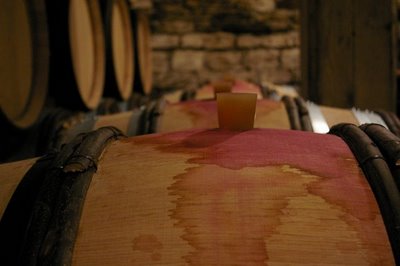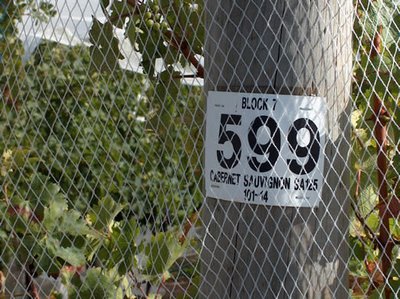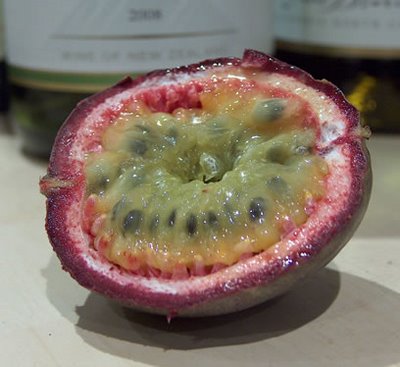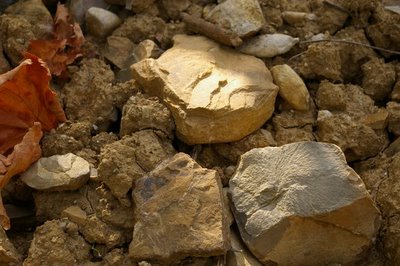Introducing terroir: a vital concept in wine
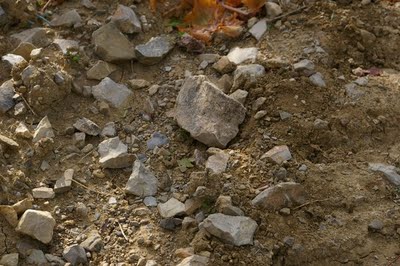
It's time to take a look at one of the most important concepts in wine. Rather unfortunately, it has a French name that doesn't translate well into English. That tends to make what is a controversial subject even more contentious.
The name in question is 'terroir', We could spend a week defining it, and still end up upsetting some people, so here's my own definition. Terroir is the possesion, by the wine, of a sense of place. It is also used to describe the environmental factors that shape the growth of the grape vine and its fruit. These include the meso and micro climate, the soil, water availablity and aspect. Bringing these together: terroir is the sense of place in a wine contributed by the vineyard environment. Or defined more practically: grapes grown in different places produce wines that taste different.
Do we also include the human element: the way the vines are tended? This is contentious. It's probably easiest if we leave people out of it and just focus on the vine and its surroundings.
Grape vines are exquisitely sensitive to the environment. There are thousands of different varieties, and they're fussy about where they are grown to the point of absurdity. This is why terroir is such an important concept.
Take one variety – Pinot Noir. There aren't that many places where it can be grown successfully, because the climate and soils need to be just spot on for it to make decent wine. Originally from Burgundy, it has taken wine producers in the new world decades to find sites where they can get it to perform properly.
As well as each variety having its own enviromental requirements, even grapes of the same variety will perform differently depending on the physical characteristics of the soil and the microclimate. This is illustrated by the fact that even within Pinot Noir in Burgundy, for example, some vineyards do brilliantly with it while others, just a few metres away, make mediocre wine.
Burgundy is seen as the test case of terroir. It is a region divided into a patchwork of vineyards based on long experience. Over hundreds of years, people observed that certain vineyards did consistently better than others year after year. This resulted in a classification and structuring of vineyards based on differences in wine characteristics, and these characteristics have since been found to have their origin in the vineyard's physical properties. When the boundaries for the Burgundy vineyards were put in place, no one knew much about geology. But now geologists can show that the hierarchy of Burgundy vineyards reflects changes in the subsoil properties that influence grape and thus wine quality.
On one level, it's a bit of a truism. Different soils and climates produce wines that taste different. That's not at all contentious. So what's the problem with terroir? It is twofold. First, winemakers from new world countries are a bit upset that the old world countries claim exclusive possesion of terroir. The labelling of wines doesn't help. In Europe, wines are commonly labelled by the region, whereas in the new world, grape varieties are more likely to appear on the label. Old world guys are accused of totally overplaying the terroir hand, claiming that wine is produced by the soil and that winemakers merely have a minor custodial role in letting this site expression show.
Secondly, it's the issue of mechanism, and the lack of a correlation between soil type and flavour. It's not hard to describe the geology of a particular vineyard. It's much harder to actually correlate this with flavours in the wine. Many scientists question the notion that characters from the soil can find their way into, and shape, the wine.
Perhaps a more useful term would be 'typicity'. This brings into the equation the human factor. We shouldn't ignore this: if it wasn't for human intervention, there would be no wine, and if the nature of the human intervention were not critical, then all the wines made from a particular vineyard would be the same. But look at Burgundy's famous vineyards: most are worked by dozens of growers. Some of the wines will be excellent, some poor, and most of middling quality – even from famous sites. Clearly, the ability of the winemaker is really important here, even if its in knowing when to leave things alone.
'Typicity' recognizes this. It's a really useful term, but unfortunately it's not as sexy as terroir, so it will probably never catch on.
A few closing thoughts. First, some varieties tend to express a sense of place better than others. Pinot Noir, Riesling and Syrah are good in this respect, Cabernet Sauvignon, Sauvignon Blanc and Chardonnay are not. Second, heavy handed winemaking, for example by picking very late and using lots of new oak, blasts away the subtle influence of terroir. And third, I think it is totally cool that grapevines are so sensitive to their environment because this is what has brought us the vast diversity of wine styles that we are lucky enough to have today.
